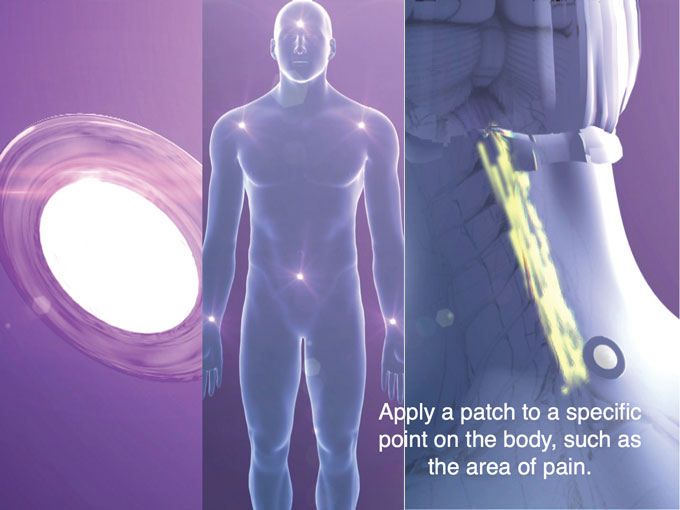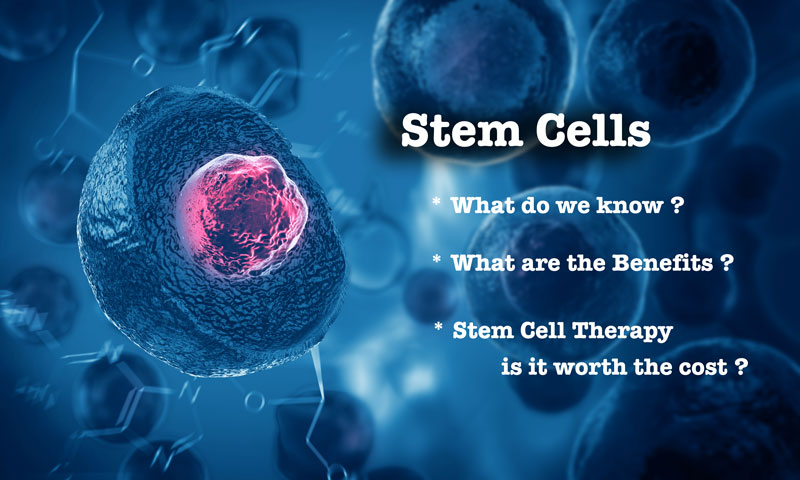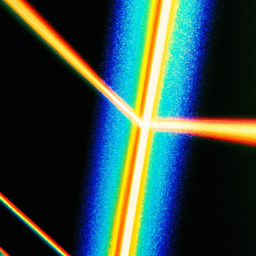Hey there! Have you ever heard of photobiomodulation? It may sound like a mouthful, but it’s actually a fascinating topic that involves light therapy. In this article, we’ll delve into what photobiomodulation is all about and how it can potentially benefit different aspects of your health and well-being. From rejuvenating your skin to relieving pain and even improving cognitive function, photobiomodulation has some pretty impressive claims. So, if you’re curious to learn more, keep reading and prepare to be enlightened!
In this article, we’ll explore the science behind photobiomodulation and how it involves the application of specific wavelengths of light to stimulate cellular activity. We’ll discuss the different mechanisms by which light therapy can have a positive impact on various conditions, such as wound healing, inflammation, and even depression. Moreover, we’ll touch upon the emerging research and potential future applications of photobiomodulation in fields like dentistry, sports medicine, and neurology. So, whether you’re interested in seeking alternative therapies or simply wanting to understand the power of light in a whole new way, this article will provide you with a solid introduction to photobiomodulation. Get ready to shed some light on this fascinating topic!
What is Photobiomodulation?
Photobiomodulation, also known as low-level light therapy or cold laser therapy, is a non-invasive treatment modality that uses light energy to enhance certain cellular processes in the body. This therapy has gained popularity in recent years due to its potential to promote healing, reduce pain, and improve overall well-being.
Definition of Photobiomodulation
Photobiomodulation involves the use of specific wavelengths of light, typically in the red or near-infrared spectrum, to stimulate cellular function. The light energy is absorbed by the mitochondria, the powerhouses of the cells, which triggers various biochemical reactions leading to physiological changes. These changes include improved circulation, increased production of ATP (the energy currency of the cells), and the release of growth factors.
Principles of Photobiomodulation
The principles of photobiomodulation are rooted in the discovery that light can have a biological effect on living organisms. Certain wavelengths of light can penetrate the skin and interact with cellular structures, influencing their behavior and function. The therapeutic effects of photobiomodulation are dependent on factors such as the specific wavelength, intensity, and duration of light exposure.
Types of Photobiomodulation
There are different types of photobiomodulation devices that vary in terms of the light source and delivery method. Some of the most common types include laser diodes, light-emitting diodes (LEDs), and lamps. These devices can emit light at specific wavelengths and can be applied directly to the skin or used in conjunction with light-conducting pads.
History of Photobiomodulation
Early discoveries and research
The concept of photobiomodulation dates back to ancient civilizations, where sunlight was believed to possess healing properties. However, modern scientific research on the therapeutic effects of light therapy began in the 1960s. Initially, researchers explored the use of lasers for various medical applications and discovered that specific light wavelengths could stimulate cellular processes.
Development of modern Photobiomodulation techniques
Throughout the 20th century, researchers continued to study the effects of light on biological systems, leading to advancements in photobiomodulation techniques. The development of light-emitting diodes (LEDs) in the 1990s revolutionized the field by providing a more practical and cost-effective way to deliver light therapy. Today, photobiomodulation is widely adopted in various medical and aesthetic practices.
Mechanism of Action
Effects of light on cellular processes
Photobiomodulation works by interacting with chromophores, which are light-absorbing molecules found within cells. When these chromophores absorb light, they undergo a series of photochemical reactions, leading to changes in cellular function. This includes increased energy production, modulation of inflammation, and enhanced tissue repair.
Role of chromophores in light therapy
The main chromophore involved in photobiomodulation is cytochrome c oxidase, a key enzyme within the mitochondria that plays a crucial role in cellular respiration. When stimulated by light, cytochrome c oxidase activates a cascade of events that promote cellular metabolism and functions. Other chromophores, such as flavins and porphyrins, also contribute to the therapeutic effects of light therapy.
Applications of Photobiomodulation
Wound healing
Photobiomodulation has shown significant potential in accelerating the healing process of wounds. By stimulating cellular metabolism and promoting the production of collagen, light therapy can improve tissue regeneration and reduce inflammation. This makes it particularly effective in treating chronic wounds, such as diabetic ulcers.
Pain management
Light therapy has been widely employed as a non-invasive approach to managing various types of pain, including musculoskeletal pain, neuropathic pain, and postoperative pain. The analgesic effects of photobiomodulation are believed to result from the reduction of inflammation, the release of endogenous opioids, and the modulation of pain signaling pathways.
Hair regrowth
For individuals experiencing hair loss or thinning, photobiomodulation offers a promising solution. By stimulating hair follicles and increasing blood flow to the scalp, light therapy can promote the growth of thicker, healthier hair. This treatment is particularly beneficial for individuals with androgenetic alopecia, a common form of hair loss.
Skin rejuvenation
Light therapy has become a popular tool in the field of aesthetics due to its ability to improve the appearance of the skin. By stimulating collagen production, reducing wrinkles and fine lines, and enhancing overall skin tone, photobiomodulation can help individuals achieve a more youthful and revitalized complexion. It is also effective in treating conditions such as acne and rosacea.
Clinical Studies and Evidence
Summary of key clinical trials
Numerous clinical studies have been conducted to evaluate the efficacy of photobiomodulation across different medical fields. A systematic review published in 2020 concluded that low-level light therapy demonstrated positive effects in various conditions, including chronic pain, wound healing, and oral mucositis. However, further research is needed to fully understand the optimal treatment protocols and mechanisms of action.
Efficacy of Photobiomodulation for different conditions
Research suggests that photobiomodulation can provide significant benefits in a range of conditions. In one study, patients with osteoarthritis experienced reduced pain and improved function after undergoing light therapy sessions. Another study found that photobiomodulation was effective in promoting wound healing in diabetic foot ulcers. This growing body of evidence demonstrates the potential of light therapy as a valuable treatment option.
Safety and Side Effects
Common side effects
Photobiomodulation therapy is generally considered safe and well-tolerated when used properly. However, some individuals may experience mild and temporary side effects, such as temporary redness, warmth, or a tingling sensation at the treatment site. These side effects typically resolve within a short period and do not require any specific interventions.
Precautions to take during Photobiomodulation therapy
While photobiomodulation therapy is safe, certain precautions should be taken to ensure optimal results and minimize potential risks. It is essential to follow the recommended treatment protocols, which may include the appropriate duration and intensity of light exposure. It is also crucial to protect the eyes from direct exposure to light and to consult a qualified professional before using light therapy in specific medical conditions or with certain medications.
Devices and Equipment
Different types of light therapy devices
There are various types of photobiomodulation devices available on the market, each with its own characteristics and applications. Laser devices deliver highly focused light beams and are often used for specific medical procedures. LED devices, on the other hand, emit a broader spectrum of light and are more commonly used for general therapeutic purposes. It is important to select a device that is appropriate for the intended treatment and follow the manufacturer’s instructions.
Choosing the right device for specific treatments
When selecting a light therapy device, it is essential to consider factors such as the desired treatment area, the required power output, and the portability of the device. Professional users, such as healthcare professionals and aestheticians, should also ensure that the device they choose complies with regulatory standards and follows established safety guidelines.
Professional Training and Certification
Courses and programs available for professionals
As the field of photobiomodulation continues to grow, various training programs and courses are available for healthcare professionals, researchers, and aestheticians. These programs provide a comprehensive understanding of the principles and practical applications of light therapy. They cover topics such as treatment protocols, safety considerations, and the latest research findings in the field.
Importance of proper training in Photobiomodulation
Proper training is crucial for professionals utilizing photobiomodulation in their practice. It ensures that practitioners have the necessary knowledge and skills to administer light therapy safely and effectively. Training programs also help professionals stay updated with the latest advancements in the field, allowing them to provide the best possible care to their patients.
Cost and Accessibility
Affordability of Photobiomodulation therapy
The cost of photobiomodulation therapy can vary depending on factors such as the type of device used, the number of sessions required, and the geographical location. While more advanced laser devices can be expensive, LED-based devices offer a more affordable option for both professionals and individuals seeking light therapy. Additionally, some insurance plans may cover the cost of light therapy for specific medical conditions.
Availability of light therapy clinics and practitioners
Light therapy clinics and practitioners can be found in many major cities around the world. While the availability may vary depending on the location, the growing popularity of photobiomodulation has led to an increased number of professionals offering this therapy. Additionally, as portable and home-use devices become more accessible, individuals have the option to perform light therapy in the comfort of their own homes.
Conclusion
Benefits of Photobiomodulation as a non-invasive therapy
Photobiomodulation, or light therapy, has shown significant potential in promoting healing, reducing pain, and improving overall well-being. Its non-invasive nature, combined with minimal side effects, makes it an attractive treatment option for various medical conditions. From wound healing to pain management to aesthetic improvements, photobiomodulation offers a safe and effective alternative to traditional treatment methods.
Future prospects and advancements in the field
As research in photobiomodulation continues to evolve, the field holds great promise for future advancements. Scientists are exploring the use of different light wavelengths and delivery methods to optimize treatment outcomes. Additionally, ongoing clinical trials and research studies are providing valuable insights into the mechanisms of action and specific applications of light therapy. With further advancements, photobiomodulation has the potential to revolutionize the way we approach healthcare and well-being.
In conclusion, photobiomodulation, or light therapy, offers a non-invasive and effective approach to promoting healing, reducing pain, and improving various medical conditions. With its rich history, deep-rooted scientific principles, and growing body of evidence, photobiomodulation is emerging as a valuable tool in the fields of medicine, aesthetics, and overall wellness. Whether administered by a professional or used at home, light therapy provides a gentle yet powerful treatment option that holds great potential for the future of healthcare. So why not explore the healing power of light and experience the benefits of photobiomodulation for yourself?





